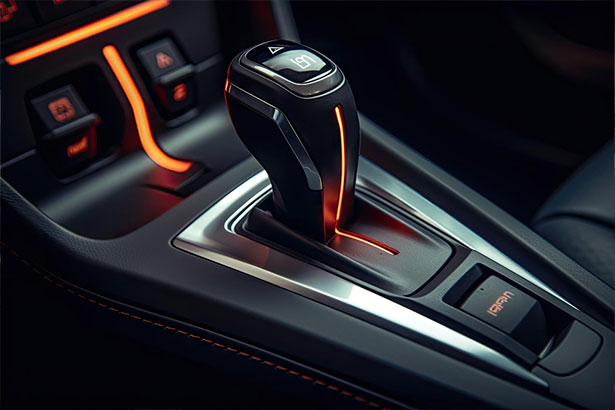
Modern Car Tech Features Explained
When browsing the interwebs for a new car you may come across many abbreviations for modern vehicle car features that are Greek to you. From ESA to AFS many common technical specs are lost on us, mere mortals. If you’re tired of Googling, we have put together a comprehensive list of vehicle lingo explained.
First, let’s start with safety features. It might sound fancy if your car has EBD and ABS, but what do they mean? Let’s break it down for you so you can truly appreciate the technology of today!
Vehicle Safety Terminology Explained
Emergency Steering Assist (ESA)
Emergency Steering Assist is designed to improve a driver’s steering in the case of an imminent front collision with another vehicle. In scenarios where you would quickly need to move around obstacles, the computer takes into account the driver’s input torque and speed to determine manoeuvre intent, then provides added power steering support to help properly redirect the vehicle and restabilise afterwards.
Electronic Brakeforce Distribution (EBD)
This balances front-to-rear brake pressure by electronically gauging weight shifts under deceleration. EBS technology prevents rear-wheel lock and allows you to maintain more control by optimising braking forces at each wheel.
Vehicle Stability Control (VSC)
Vehicle Stability Control or VSC is an electronic system that detects loss of traction during cornering or wet and slippery conditions. It automatically applies individual brakes and reduces engine power to help steer the vehicle where the driver intends to go, preventing skids or spins.
Traction Control System (TCS)
This system maintains drive wheel traction by detecting spinning wheels on slippery surfaces, automatically reducing throttle input and applying brakes to those wheels so others can gain grip.
Hill Start Assist Control (HAC)
If you’re nervous on those hill stops, Hill Start Assist is your best friend. It temporarily keeps brake pressure after releasing the pedal when stopped on inclines, preventing rollback for a moment so the driver has time to transition to the accelerator without sliding backwards.
Brake Assist System (BAS)
This system detects emergency braking situations based on quick rates of pedal depression and then generates additional hydraulic boost to maximise stopping power compared to a normal pedal force which the driver would apply in non-emergencies.
re-Collision System (PCS)
The Pre-Collision System is radar and camera technology that warns drivers of potential front collisions and prepares the car’s safety systems. PCS can initiate automatic emergency braking if the driver doesn’t respond in time to alerts.
Blind Spot Monitor (BSM)
The Blind Spot Monitor has radars that are mounted to the rear bumper to detect vehicles in adjacent lanes the driver can’t see. Dashboard warnings then let the driver know not to change lanes, so you avoid a crash that could have been caused by that nasty blind spot.
Rear Cross Traffic Alert (RCTA)
Here radars and cameras detect oncoming vehicles about to cross behind a reversing vehicle (as when backing out of parking spots) and warn the driver to stop by using audible alerts, flashing indicators and automatic braking.
Parking Support Brake (PKSB)
At low speeds, Parking Support Break uses cameras and sometimes sonar to detect objects while parking. It can trigger autonomous braking if a collision is imminent and the driver fails to react, lessening or preventing contact completely.
Intelligent Clearance Sonar (ICS)
These front or rear corner-mounted sonar sensors gauge distances between the vehicle body and nearby obstacles like walls or posts during very low-speed manoeuvring, which prevents scrapes and dents.
Vehicle Dynamics Integrated Management (VDIM)
An overarching networked management system that coordinates between ABS, stability/traction control, steering and other systems to optimise control and safety.
Active Cornering Assist (ACA)
At higher yet safe cornering speeds, Active Cornering Assist brakes wheels on the inner radius of curvature to counteract understeer and enhance control, while accelerating outer wheels. This in layman’s terms helps drivers navigate turns.
Enhanced System Features
The beauty of driving a car in this day and age is that there are so many amazing technologies that can improve the experience. Let’s take a look at some enhanced features of today’s cars.
Adaptive Front-lighting System (AFS)
This is a software system that moves headlight beams in sync with vehicle steering angle and speed to better illuminate road curvature, intersections and so on.
Automatic High Beam (AHB)
Uses an optical sensor and camera to detect oncoming traffic at night and automatically switch between high and low beams to avoid blinding others while maximising driver visibility.
Dynamic Radar Cruise Control (DRCC)
Advanced intelligent cruise control that uses onboard radars to detect the speed of vehicles ahead and automatically adapts the driver’s preset speed to maintain safer distances without needing to disable cruise.
Lane Tracing Assist (LTA)
Uses cameras to detect lane markings on roads and provides corrective steering torque if drifting, keeping vehicle centred within the lane to aid driver focus and positioning.
Road Sign Assist (RSA)
Road Sign Assist uses windshield cameras paired with GPS mapping data to visually detect speed limits, school zones, and construction sites, for example. It displays this information to the driver on the dashboard.
Dual Variable Valve Timing with intelligence (VVT-i)
Computer-managed intake/exhaust camshaft phasing technology that optimises valve openings based on load and engine speed to improve power, efficiency and emissions.
Continuously Variable Transmission (CVT)
Belt/pulley automatic transmission system with no fixed gear ratios. Stepless gear ratios provide optimal engine operation and seamless acceleration without shift points.
That was part one of our series on modern car lingo! If you enjoyed learning some new technical terms don’t miss our next two parts in the series. In the meantime, why not browse Group1’s website and see if any of the new and used cars you are interested in have these technical specs?

